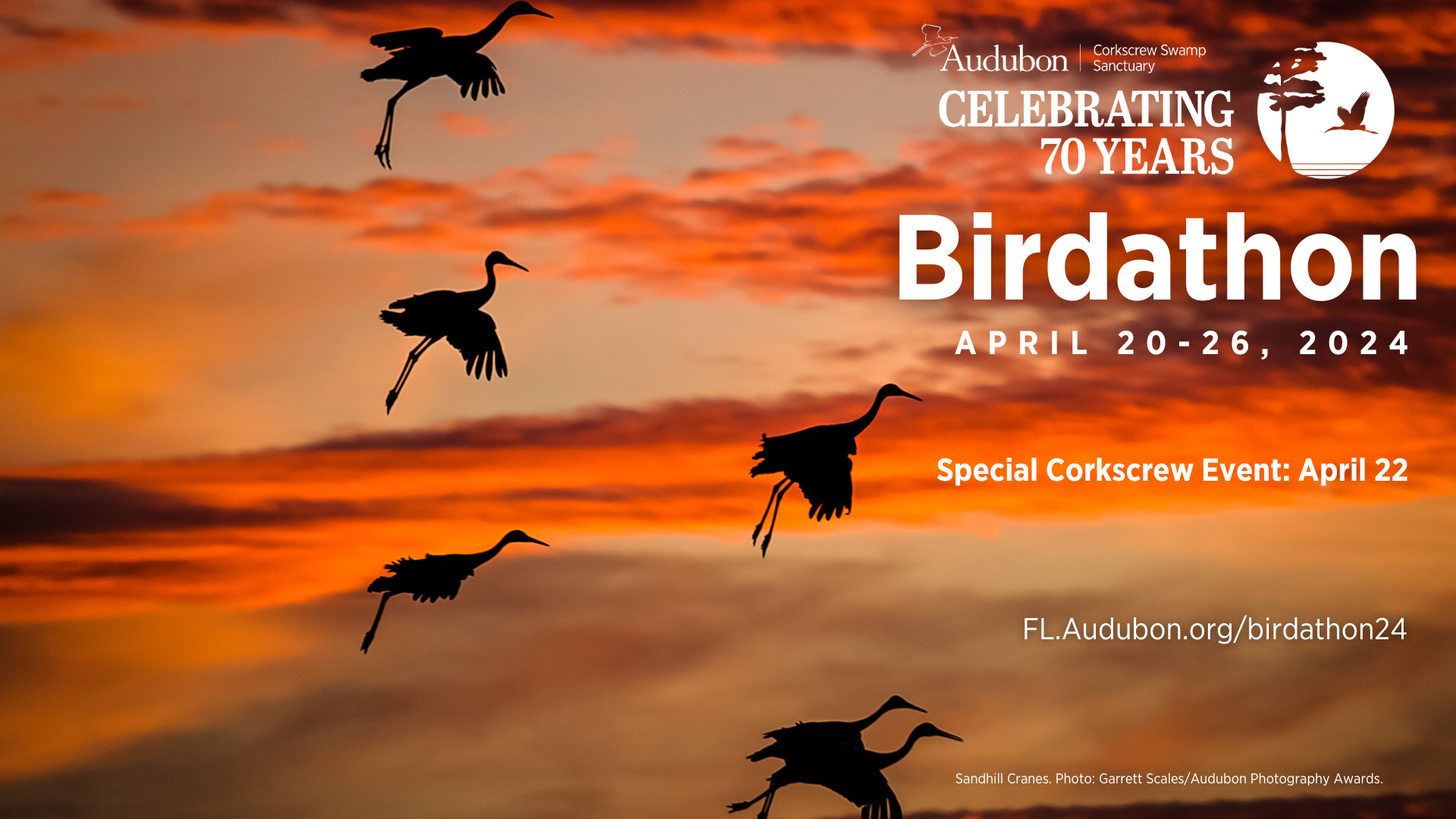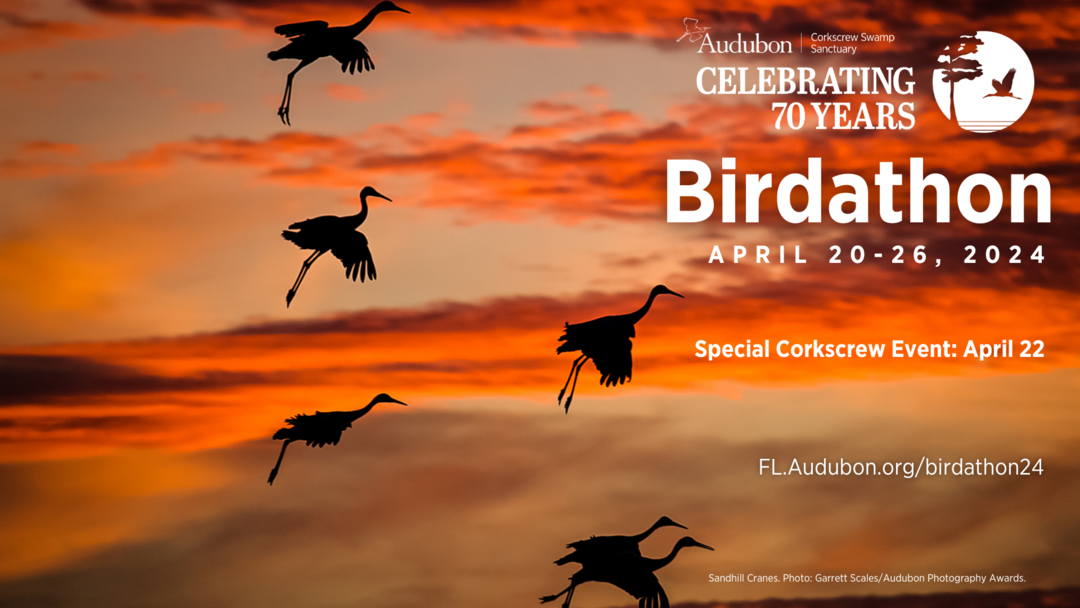Celebrate your love for birds and nature by participating in the Audubon Florida Birdathon!
The Birdathon will be open for an entire week. Pick any 24-hour period within the week of April 20 - 26. By joining us, you’ll help raise much-needed funds to protect birds and the places they need, while taking part in one of America’s most popular—and growing—pastimes.
Click here to learn more about the Audubon Florida Birdathon.
As part of Birdathon and Earth Day festivities, Corkscrew Swamp Sanctuary is holding a series of special events - including a morning bird walk! Check out the full list of Earth Day events here.
Can't make it on the 22nd? No worries, you can do your Birdathon at Corkscrew Swamp Sanctuary any day within the count window, and we are hosting a longer bird walk on April 23 (click here for more information).
Online boardwalk reservations are recommended. Admissions is always free for those with a Corkscrew Swamp Sanctuary membership.
Cool Prizes
In honor of our Birdathon, anyone who submits a checklist from Corkscrew Swamp Sanctuary that includes all seven of our "bonus" species (see below) will have a chance to win a fun, 70th-anniversary commemorative item! On Monday, April 29, we will pull three names to win their choice of a 70th-anniversary t-shirt, our beautiful and newly updated field guide, or a whimsical wildlife magnet.
Bonus Species
Nearly wiped out in the United States in the late 1800s when its plumes were sought for use in fashion, the Great Egret made a comeback after early conservationists put a stop to the slaughter. Audubon wardens first protected wading bird colonies at the Corkscrew rookery in 1912. Several decades later, the first 5,680 acres of Corkscrew Swamp were purchased and donated by the local community to establish Corkscrew Swamp Sanctuary.
Locally common in coastal Florida, Texas, and southwest Louisiana, Roseate Spoonbills use their spoon-shaped bill to feed on a variety of aquatic prey in shallow waters and other wetland habitats. Historically, they nested in Florida Bay, but changing environmental conditions are causing them to seek out new locations for breeding. In 2013, Audubon established the Western Everglades Research Center at Corkscrew Swamp Sanctuary to provide critical data in support of regional wetlands conservation.
The ancient bald cypress forest at Corkscrew Swamp Sanctuary historically supported the renowned Corkscrew Wood Stork colony with tens of thousands of nests. Audubon monitoring efforts, however, showed that the wetlands here are drying out too quickly and nuisance woody shrubs are replacing the wet prairie habitat that storks need to feed their families. In 2022, Audubon kicked off the Marsh and Prairie Restoration Project, a multi-year, multi-million-dollar effort.
A favorite warbler for beginning birders because it is easy to see and recognize, the Black-and-White Warbler is seen most often on trunks and low branches of trees within woodlands and thickets. They spend winters in South Florida and are frequently spotted from the Corkscrew Swamp Sanctuary boardwalk, which was first built in 1955, then rebuilt in 1960 and again in 1996.
One of the most numerous wading birds in Florida, the White Ibis is highly sociable and easily spotted year-round in a variety of wetland habitats. These versatile birds are representative of the outstanding biological and geological resources for which the Sanctuary was designated a National Natural Landmark by the Department of the Interior in 1964.
Although not as highly sought after for its plumes as white wading birds, the Little Blue Heron has continued to experience population declines, suggesting that preservation of important foraging habitat is critical. Now, more than ever, Audubon depends on support and partnerships with private citizens, neighbors, elected officials, and folks making land use decisions. The Blair Visitor Center opened to the public in 1996 to expand outreach efforts and generate support for regional wetland conservation.
Pileated Woodpeckers thrive at Corkscrew Swamp Sanctuary because the ancient forest contains plenty of older trees that are big enough for their nesting cavities, which, when vacated, provide habitat for several other species of birds and wildlife. In 2022, Audubon launched a capital campaign to elevate conservation and education with a new research center, outdoor classroom, and volunteer headquarters.












